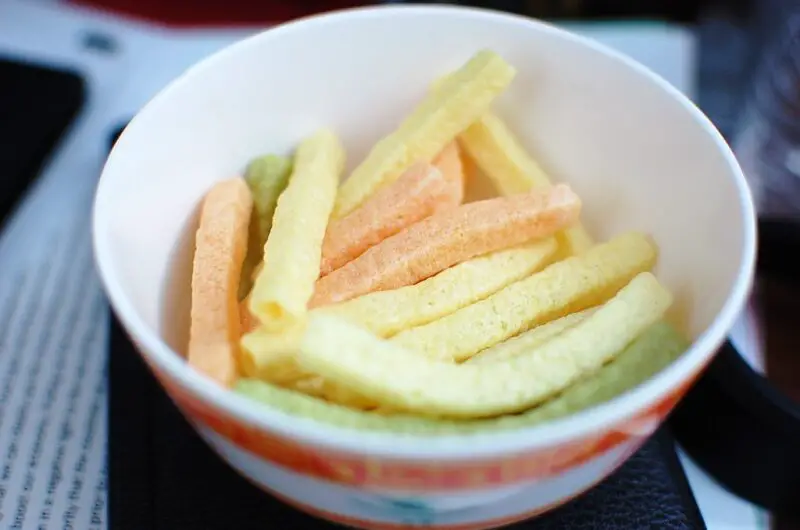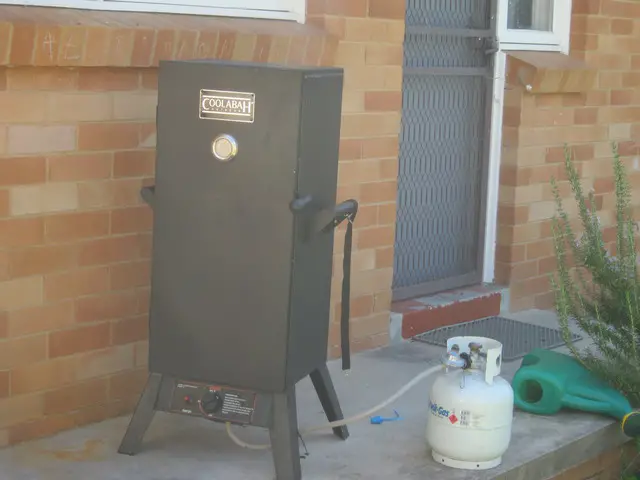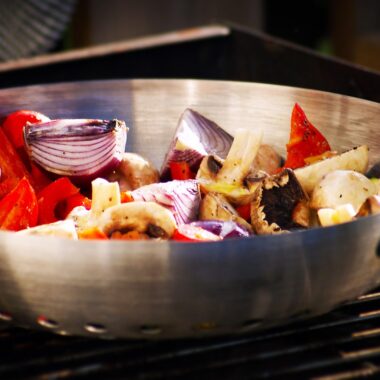In a world where processed snacks dominate grocery store shelves, finding a healthier alternative that still satisfies your craving for something crispy and flavorful can feel like a challenge. Enter veggie straws—a snack that’s gained popularity for its light, airy texture and vibrant vegetable-inspired flavors. While store-bought veggie straws are convenient, they often come with hidden sodium, artificial additives, and questionable nutritional value. Why not take control and make your own? This article will guide you through a homemade veggie straws recipe that’s customizable, nutritious, and surprisingly simple to whip up in your kitchen.
Whether you’re a health-conscious foodie, a parent looking for kid-friendly snacks, or just someone who loves to experiment with recipes, homemade veggie straws offer a fun and rewarding culinary project. Below, we’ll dive into the essentials: the history of veggie straws, the ingredients you’ll need, step-by-step instructions, creative variations, and tips to make them your own. Let’s get started!
The Rise of Veggie Straws: A Snack with Roots in Innovation
Veggie straws as we know them today emerged from the growing demand for healthier snack options in the late 20th and early 21st centuries. While traditional potato chips reigned supreme for decades, the shift toward mindful eating spurred food companies to experiment with vegetable-based alternatives. Brands like Sensible Portions popularized veggie straws, blending potato starch with spinach, tomato, and beet powders to create a colorful, crunchy treat marketed as a “better-for-you” option.
But let’s be real—many commercial veggie straws are more potato than vegetable, often relying on flavorings rather than actual veggie content. Making them at home lets you flip the script, prioritizing real vegetables and cutting out the junk. Plus, it’s a chance to channel your inner chef and craft a snack tailored to your taste buds.
Why Make Veggie Straws at Home?
There’s something deeply satisfying about crafting snacks from scratch. Homemade veggie straws give you full control over the ingredients, letting you avoid preservatives, excess salt, and artificial flavors. They’re also a fantastic way to sneak more veggies into your diet—or your kids’—without sacrificing that craveable crunch. Whether baked or fried, they’re versatile enough to pair with dips, sprinkle with spices, or enjoy solo.
Beyond nutrition, making veggie straws is a budget-friendly alternative to store-bought bags, which can get pricey over time. With a few pantry staples and some fresh produce, you can whip up a batch that lasts for days (if you don’t eat them all first!). Ready to roll up your sleeves? Let’s gather the essentials.
Ingredients for Homemade Veggie Straws
This recipe yields about 4-6 servings, depending on how generously you snack. Feel free to adjust quantities based on your needs.
Base Ingredients:
- 1 medium potato (russet or Yukon gold, about 200g) – Provides structure and crispiness.
- 1 small sweet potato (about 150g) – Adds natural sweetness and a vibrant orange hue.
- 1 medium zucchini (about 150g) – Brings moisture and a subtle green tint.
- 1 small beet (about 100g) – Offers earthy flavor and a striking red-pink color.
- 1 cup all-purpose flour (or gluten-free alternative like rice flour) – Binds the dough.
- 1/2 cup cornstarch – Enhances crispiness.
- 1 teaspoon salt – Adjust to taste.
- 1/2 teaspoon black pepper – For a mild kick.
- 1 teaspoon garlic powder – Adds savory depth.
- 1 teaspoon paprika (optional) – For a smoky note.
- 2-3 tablespoons olive oil or melted coconut oil – Helps with texture and flavor.
- Water (as needed, about 1/4 to 1/2 cup) – To form the dough.
Equipment:
- Food processor or blender
- Rolling pin
- Piping bag with a small round tip (or a zip-top bag with a corner snipped)
- Baking sheets (if baking) or a deep skillet (if frying)
- Parchment paper or a silicone baking mat
- Sharp knife or pizza cutter (optional)
Step-by-Step Instructions
This recipe offers two cooking methods—baking for a lighter option or frying for maximum crunch. Both deliver delicious results, so choose based on your preference.
Step 1: Prepare the Vegetables
Start by washing your potato, sweet potato, zucchini, and beet thoroughly. Peel the potato and sweet potato if you prefer a smoother texture, though leaving the skins on adds fiber and rustic appeal. For the beet, peeling is optional—its skin is thin and edible, but peeling can reduce bitterness. Grate or finely chop the vegetables by hand, or use a food processor to speed things up. Aim for a consistent, fine texture.
Place the grated veggies in a clean kitchen towel or cheesecloth and squeeze out as much moisture as possible. This step is crucial—excess water will make your dough soggy and prevent crispiness. Set the drained veggies aside in a large mixing bowl.
Step 2: Make the Dough
To the bowl of grated veggies, add the flour, cornstarch, salt, pepper, garlic powder, and paprika. Mix well until the dry ingredients coat the vegetables evenly. Drizzle in the olive oil and start kneading with your hands. Gradually add water, a tablespoon at a time, until the mixture forms a pliable dough. It should be smooth and slightly sticky but not wet—think playdough consistency.
If you’re using multiple veggies, you can either combine them into one dough for a multicolored effect or separate them to create distinct batches (e.g., beet straws, zucchini straws). Divide the dough into manageable portions if needed.
Step 3: Shape the Straws
Transfer a portion of dough to a piping bag fitted with a small round tip (about 1/4 inch in diameter). If you don’t have a piping bag, a sturdy zip-top bag with a corner snipped off works just as well. On a lightly floured surface or directly onto parchment-lined baking sheets, pipe long, thin strips of dough—about 4-6 inches each. Don’t worry if they’re not perfectly uniform; the charm of homemade veggie straws lies in their quirks.
For a more traditional “straw” shape, keep the strips hollow by piping quickly and steadily. If piping feels tricky, roll the dough into a thin sheet (about 1/8 inch thick) and use a knife or pizza cutter to slice it into strips.
Step 4: Cook the Straws
Baking Method: Preheat your oven to 375°F (190°C). Arrange the piped or cut straws on a parchment-lined baking sheet, ensuring they don’t overlap. Lightly brush with olive oil for extra crispiness (optional). Bake for 15-20 minutes, flipping halfway through, until golden and firm. Keep an eye on them—thinner straws cook faster and can burn if overdone. Let them cool completely on a wire rack; they’ll crisp up as they sit.
Frying Method: Heat 2-3 inches of neutral oil (like canola or vegetable oil) in a deep skillet or pot to 350°F (175°C). Fry the straws in small batches, 1-2 minutes per side, until golden and crisp. Use a slotted spoon to transfer them to a paper towel-lined plate to drain excess oil. Sprinkle with extra salt or spices while they’re hot, if desired.
Step 5: Serve and Store
Enjoy your veggie straws fresh for the best texture. Serve them plain, with hummus, ranch dip, or a spicy salsa. Store leftovers in an airtight container at room temperature for up to a week—though they rarely last that long!
Creative Variations to Try
One of the joys of homemade veggie straws is how adaptable they are. Here are some ideas to switch things up:
- Spicy Chili Straws: Add 1 teaspoon of chili powder or cayenne to the dough for a fiery kick.
- Cheesy Herb Straws: Mix in 1/4 cup grated Parmesan or nutritional yeast, plus dried rosemary or thyme.
- Root Veggie Medley: Swap zucchini for carrots or parsnips for a sweeter, earthier flavor.
- Gluten-Free Option: Use a blend of rice flour and tapioca starch instead of all-purpose flour.
- Rainbow Straws: Separate the dough and color each batch with natural powders (spinach for green, turmeric for yellow, beet for red).
Experiment with shapes, too—twist the strips into spirals or cut them into bite-sized pieces for a fun twist.
Nutritional Benefits
Unlike their store-bought counterparts, these homemade veggie straws pack real vegetable goodness. Potatoes provide potassium and vitamin C, sweet potatoes offer beta-carotene, zucchini adds hydration and fiber, and beets bring antioxidants like betalains. By baking instead of frying, you cut down on fat, and skipping artificial flavorings keeps the sodium in check.
A typical serving (about 1 cup) clocks in at roughly 150-200 calories, depending on the cooking method and oil use.
Compare that to a bag of chips, and you’re getting more nutrients for fewer empty calories. Plus, the DIY approach lets you tweak the recipe to suit dietary needs—low-salt, gluten-free, or vegan.
Tips for Success
- Moisture Matters: Don’t skip squeezing the veggies dry—wet dough leads to limp straws.
- Season Boldly: Taste the dough before shaping and adjust spices as needed.
- Test a Batch: Cook a few straws first to dial in timing and temperature.
- Storage Hack: Add a silica packet (food-safe) to the container to maintain crispiness.
Final Thoughts
Homemade veggie straws are more than just a snack—they’re a celebration of flavor, creativity, and wholesome ingredients. With a little prep and patience, you can transform humble vegetables into a crunchy delight that rivals anything from the store. So next time you’re craving something to munch on, skip the processed stuff and give this recipe a whirl. Your taste buds (and your body) will thank you.
What’s your favorite veggie to snack on? Let me know—I’d love to hear how you make this recipe your own!


















